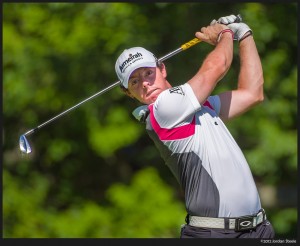
As you can see by looking at the front page (or by looking in the “photos” archive if reading this a few weeks after I write it), I had a chance to shoot the Memorial Tournament Pro-Am and practice rounds using my Olympus OM-D E-M5 this past week. I thought I’d share a few key observations when using the E-M5 to shoot sports that don’t require focus tracking, such as golf. I know these sports are few and far between, but Golf and Baseball are two that I think can easily be shot with great effect with the E-M5.
Click on any image to view it larger.
For a much more comprehensive collection of shots from my week at The Memorial Tournament, view the image posts here, here and here.
Battery Life
I was a little worried about battery life when I went out. The E-M5 is rated for 330 shots on a single charge. Well, in a full day of golf shooting, I will shoot FAR more than that. I knew that I’d get more than 330, simply because I was shooting with the 9 fps burst on the whole day, so there wouldn’t be as much time viewing through the viewfinder per image. Still, I had my GX1 and viewfinder in a hip bag ready to fill in when the E-M5 died.
Except, the E-M5 didn’t die. During Wednesday’s Pro-Am, I took 872 images with the E-M5, and did quite a bit of image review as well. While I had IS disabled upon burst, I did use IS to stabilize the viewfinder for focusing and framing throughout the day. The best part? I still had quite a bit of battery power left too. Going up the 18th fairway, on my last hole of the day, was the first time I saw the battery meter switch from full to 2/3 full. Now, that happens at a little more than half actual draining, but still…I was very impressed and pleased.
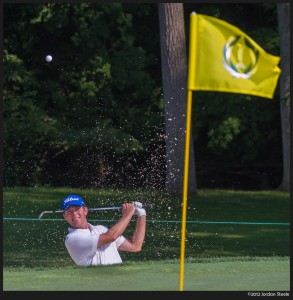
EVF
The EVF performed very well. I shot the whole week with my manual focus Canon FD 50-300mm f/4.5L. It’s a wonderful lens, but required precise focus due to the long focal length and relatively fast aperture. I used the magnified viewfinder (I have magnify mapped to my Fn2 button) to set my focus, and it worked great. I would frame the shot how I liked, position the focus box over where I needed to focus, then zoom in, hit precise focus when the golfer addressed the ball, and then zoom back out to confirm framing. The in-body IS in the E-M5 can also stabilize the viewfinder just like when using optical stabilized lenses on other cameras, and it was a wonderful help, making precise framing easy. Without it, even though I shot with a monopod, getting precise framing at the long end of the zoom (equivalent field of view like that of a 600mm lens on full frame) would have been very difficult.
Performance and Handling
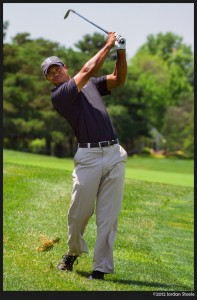
I used the HLD-6 grip, both horizontal and vertical sections, throughout the week. It was a really nice thing to have the more comfortable grip, especially in portrait orientation. It made keeping the camera steady easier and less fatiguing. The camera also was a joy to shoot with.
The 9 frame per second bursts allowed for great capture of action, and the ability to get just the right moment. While I would fill the buffer on some bursts, it did not take long at all to clear some images and have the camera ready to shoot for additional frames. This was the key to getting shots like the ones to the left and below. The shot on the left was taken from in front of Tiger (I positioned my self about 70 feet in front of him, and shot low to the ground.
I framed my shot and hit the shutter immediately after hearing the impact of the club on the ball, rattling off 15 frames in a little more than a second. I caught a great part of the swing due to the rapid burst. Then, I noticed him staring intently at the ball’s flight, and I quickly zoomed in, made sure it was in focus, and rattled off six more shots. The result is the rather nice portrait below. Many other cameras I’ve shot with become very difficult to use once the buffer is full. While there is a small pause when you first fill the buffer with RAW files, I continue to be impressed by how quickly the camera is ready to shoot again after a full buffer. If you take more conservative 5-6 shot bursts, even in succession, it becomes even harder to fill the buffer. A great performance all around.
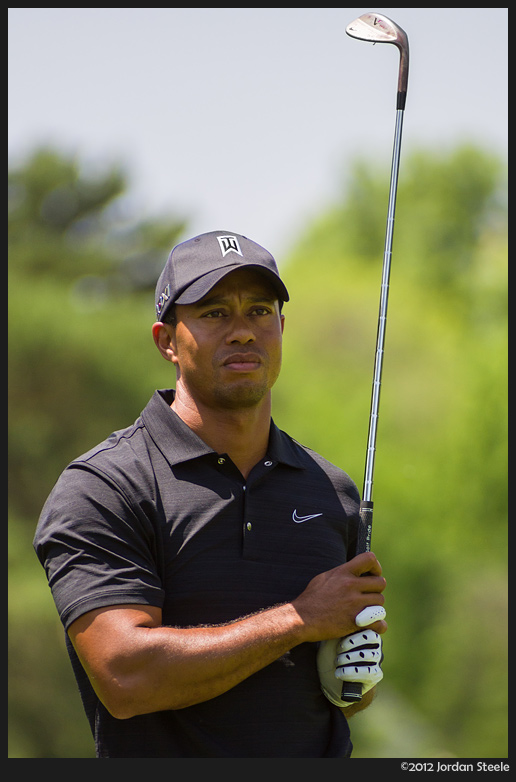
Image Quality
I am not going to go to deep into this. The images speak for themselves, in my opinion, but I wanted to touch base on one key thing. Shooting outdoor sports provides challenging lighting conditions. As photographers, we seek out the best light generally, and shoot in the evening or morning to get that softer golden light. Well, with sports you don’t have that option, and with golf, most of the time you’re shooting with the sun high in the sky. That means harsh shadows. Coupled with the bright white hats that many golfers wear, it’s a difficult task for many cameras. The E-M5 handled this harsh light beautifully, maintaining strong detail in the shadows, even when the subject was backlit, as well as keeping all highlight detail. It’s the first Micro 4/3 camera to exhibit dynamic range wide enough to fly through these lighting conditions without breaking a sweat. It was very welcome after clipping highlights a fair bit last year when I shot with the GH2 and GH1.
Final Thoughts
While I would not classify the E-M5 as a sports camera due to its lackluster continuous autofocus and the lack of fast long native lenses for the format, the camera can do a very good job given the right sport. As I mentioned earlier, sports that allow for a good bit of pre-focusing, like golf and baseball are well suited to the camera. The continuous drive mode is competitive with even professional grade DSLRs, and the excellent viewfinder and stabilization helps in framing shots with long lenses. I was impressed that the battery lasted all day, including 872 shots and a bunch of chimping, and still had some juice in the tank. The image quality was excellent, even given the very difficult lighting conditions. Overall, I really couldn’t ask for more from this tiny wonder.

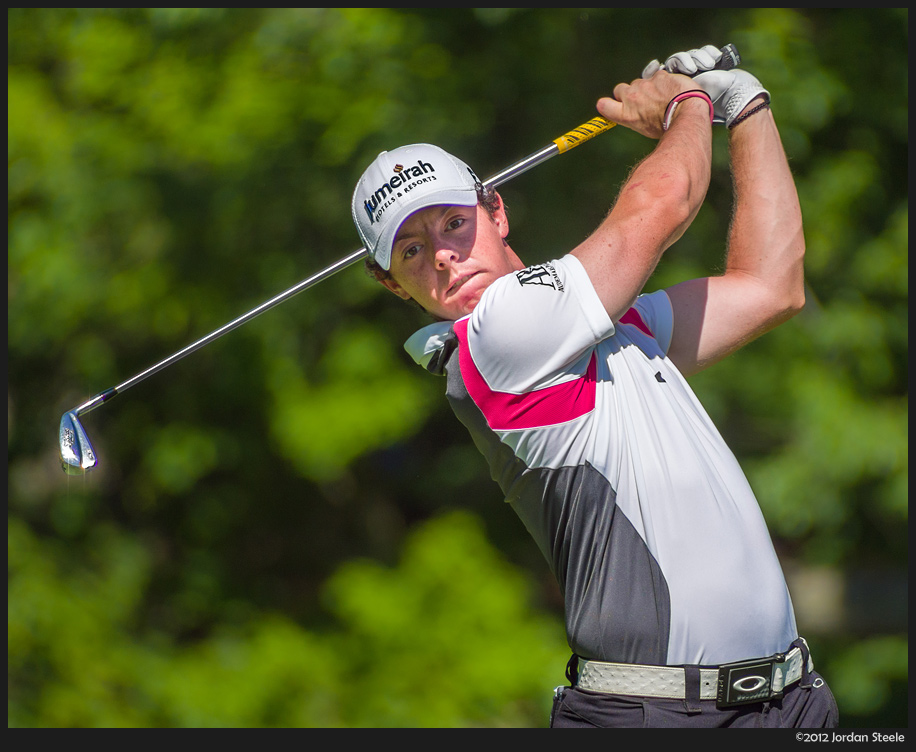




Leave a Reply